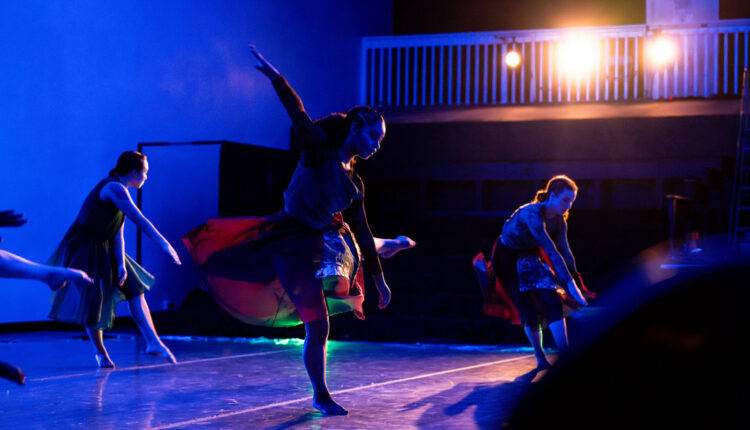Dance, a timeless and universal language, transcends the boundaries of culture, geography, and spoken word. From the reverent rituals of ancient civilizations to the pulsating lights of a modern nightclub, dance continues to be a profound expression of the human spirit. It is not merely a performance or a pastime—it is a living art form, a cultural cornerstone, and for many, a deeply personal journey. While its forms may vary across time and tradition, the soul of dance remains constant: it is movement infused with meaning.
The Ancient Roots of Human Expression
Long before language was formalized, early humans used movement to communicate emotion and intention. Cave paintings dating back tens of thousands of years depict figures frozen in mid-motion, suggesting that dance may have been one of the earliest forms of storytelling. Whether used to celebrate a hunt, invoke rain, or honor the gods, dance served as a sacred ritual and a binding communal experience.
In ancient Egypt, dancers held high status in religious ceremonies. The Greeks believed that dance was a gift from the gods, essential to education and military training. Across the globe, indigenous cultures have preserved dances that honor their ancestors and mark rites of passage—living testaments to the enduring power of movement.
Dance as Cultural Narrative
Every culture tells its story through dance. In India, Bharatanatyam and Kathak recount epics and mythologies with exquisite hand gestures and precise footwork. Flamenco in Spain expresses the fiery intensity of the Romani spirit, while traditional African dance pulses with the heartbeat of community, ancestry, and the earth itself. These forms are not just performances; they are cultural archives, preserving wisdom, values, and memory through motion.
Even modern dance movements carry cultural significance. Hip-hop, born from the streets of the Bronx, is not only a genre but a socio-political commentary—raw, real, and resonant. Latin dances like salsa and tango reflect a sensual dialogue between partners, rich with history and emotion.
The Language of the Body
To dance is to speak through the body, bypassing words and reaching a more primal level of understanding. A dancer’s body becomes the instrument through which music, emotion, and narrative are conveyed. Every gesture, every contraction or extension, communicates intent. The slightest shift in weight or gaze can evoke sadness, joy, yearning, or defiance.
Professional dancers spend years refining their technique—not only to master movement but to cultivate awareness, presence, and storytelling. Dance training is as much about discipline and resilience as it is about artistry. Ballet, for instance, demands rigorous control, yet its ultimate goal is to appear effortless—an elegant paradox that mirrors life itself.
The Emotional and Psychological Benefits
Beyond aesthetics and entertainment, dance offers profound psychological rewards. It has been shown to reduce anxiety, increase dopamine levels, and improve self-esteem. Unlike most other art forms, dance engages the body fully, demanding both mental focus and physical exertion. This union of mind and body produces a flow state—an immersive, meditative experience that elevates the dancer’s mood and sense of self.
In therapy, dance is used to help individuals process trauma and express feelings that are difficult to verbalize. Dance/movement therapy, recognized by the American Dance Therapy Association, utilizes the kinesthetic experience to promote healing and emotional integration.
Dance in the Digital Age
As technology reshapes our interaction with the world, dance too has found new platforms. Social media, particularly platforms like TikTok and Instagram, has revolutionized how dance is created, shared, and consumed. Choreography that once required weeks of rehearsal in a studio now goes viral in seconds, spreading across continents and cultures with breathtaking speed.
While some lament the loss of depth in favor of entertainment and brevity, others celebrate the democratization of dance. No longer confined to elite academies or prestigious stages, dance is now accessible to anyone with a smartphone and a desire to move. This has spurred new creativity, cross-cultural fusion, and a global dance community unlike anything seen before.
The Role of Dance in Contemporary Society
In today’s fractured and fast-paced world, dance provides a rare opportunity for unity, introspection, and shared joy. Flash mobs in public squares, dance-based fitness classes like Zumba, and inclusive dance companies that celebrate neurodiversity and disability all point to one truth: dance belongs to everyone.
Moreover, dance has become a powerful tool for activism. Performances staged to highlight issues such as climate change, gender inequality, or racial justice add visceral impact to advocacy. Movements like “Dancing for Change” or “One Billion Rising” leverage the emotional resonance of collective movement to amplify voices and drive awareness.
Why We Continue to Dance
Despite its evolving forms, the essence of dance remains unchanged. We dance to connect—with others, with ourselves, with something greater. We dance to celebrate, to grieve, to protest, to remember. Whether in the quiet solitude of a studio or the crowded energy of a festival, dance taps into something elemental.
It reminds us that we are alive. That we have bodies capable of beauty, of power, of grace. That we can tell our stories not only in words, but in motion.
Key Takeaways
-
Dance is a universal language with roots in ancient ritual, community, and communication.
-
Cultural dance forms preserve heritage and continue to evolve through modern interpretations.
-
Movement communicates emotions and narratives in ways that transcend language.
-
Dance promotes mental, emotional, and physical well-being, offering therapeutic benefits.
-
Digital platforms have democratized dance, giving rise to a global, interconnected dance culture.
-
Dance is a vehicle for social change, providing a compelling platform for activism and unity.
A Final Word
In a world often dominated by noise and distraction, dance offers something rare—a return to presence, to breath, to the poetry of movement. Whether you are a seasoned performer or someone who only dances when no one is watching, you participate in one of humanity’s oldest and most profound traditions. The music may change, the steps may differ, but the dance—eternal and transcendent—goes on.


Comments are closed.